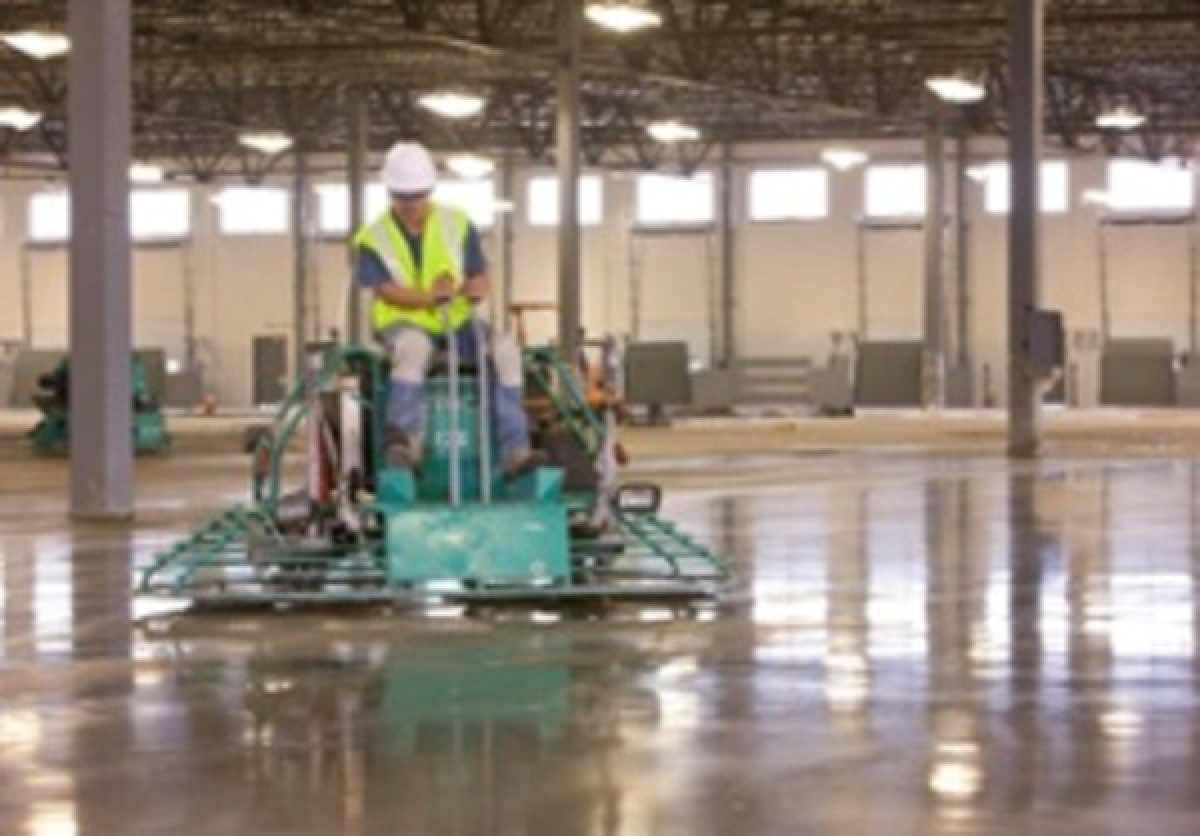
Before You Begin, Think About Finishing
Mixing, pouring, and finishing concrete is a trade that blends art with science, and braun with skill. To be a master concrete finisher, you need to combine a set of impressive physical skills with a lot of experience and a bit of intuition, too.
The concrete process can seem deceptively simple, but there is a lot to consider. When it comes to hiring a concrete crew, you want to make sure the tradesmen who will oversee each aspect of your job are very skilled, otherwise, you may wind up standing on an inferior floor that will not support your operation and continue to cost you money for the life of the facility.
The science under your floor
A good concrete contractor will begin your job by looking at the science of it. There is the physics of the space, the engineering and design of the floor, the details to reduce cracking potential, along with the amount and type of forklift traffic and many other factors that are unique to your space. All of these will determine what type of floor system best fits your individual needs,
One of the key conversations you’ll want to have with the contractor should involve finishing. You want to hire a contractor that is proud of the finish product, and you want to make sure you hear them say that they’ll use a combination of power-troweling and hand-troweling to finish your floor. If they’re using phrases like “chemical polishing” or “liquid densifiers” you may want to put a hold on their proposal and either really look into their past jobs or consider another concrete firm; I’ll tell you why.
Not all that glitters is gold
There are some contactors that lack experience, or that overtly try to save on budget by skimping on finishing – and if they’re skimping on finishing, they’re probably skimping on other materials, too. You won’t know it till the crew is long disbanded and you’re stuck with a failing floor.
In our business, a densifier is used to fill pores and increase the surface density of a concrete slab. Densifiers have a place in the process, at times, but not in new construction. They can help to reduce dusting and wear and tear on an inferior finished floor. However, there are crews out there who pour densifiers over concreate either as their mode of “finishing” a floor, or they apply the densifiers before the floor has set properly, causing a number of problems. Densifiers can continue to react with agents in your floor for months after its poured, causing problems that aren’t evident right away. When you discover these problems, you can’t find your crew anywhere. The best process for surface durability and abrasion resistants is a properly burnished troweled floor. Using the proper finishing machines, tools and timing
What the pros know
When I’m talking with clients who don’t typically have to think about floors, I tell them that the difference between chemical polishing and troweling, or burnishing, a floor is a lot like the difference between paying a buck and a half extra at the car wash for the hot wax treatment and spending the afternoon deep cleaning and waxing your car. The results are much, much different.
Finishing a floor first requires an expert who knows when it’s time to begin. Every job is different, so a well seasoned finisher knows the opportune time to start the finishing process. Starting too early, notes RHSpec, can actually trap unwanted moisture in your floor resulting in delamination and additional problems.
Knowing when to trowel is almost as important as knowing exactly how to use and maintain a trowel. This instrument can be a highly efficient way to finish a floor, saving a lot of time and adding a great deal of accuracy to your job. But the tool is only as good as its operator, and a finisher who has used a trowel for a long time will understand which blades to use – and will be very careful to make sure the blades are clean. If you’re interested in learning more about how a trowel works, check out this article from Concrete Construction.
One of the things you’ll notice about a trowel, is it’s a lot like a lawnmower – very effective but also a bit big and cumbersome, which makes it hard for the finisher to get around poles and near edges. The finisher’s version of a “weed whacker” is the art of hand troweling. Explained in this article and video by For Construction Pros, you can see how important hand-troweling is to ensuring a consistently high-quality finish across your whole floor.
Troweling is a skill that requires consistency and patience. Much like sanding down a piece of wood, you begin with rough abrasion and move toward an ever-finer abrasion until you reach the required level of flatness, densification and shine in a floor. The end result is a floor that has set correctly, is consistent throughout, and has the right burnish for its end use. You can’t get that out of a jug full of chemicals. You need the right raw materials, the appropriate amount of time, and skilled labor.
